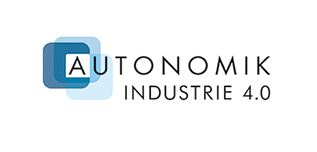Projects
Click here for information about the projects funded. Click the project title to go to the project information.
InventAIRy
Stocktaking in warehouses with autonomous flying robots
Brief description
The aim of the InventAIRy project is to develop a system for automatic location and stock-taking of warehouse stocks using autonomous flying robots. The system sensors ensure that the flying robots can independently detect and analyse their environment so that they can navigate their way through the warehouse, detect logistics objects and do stock-taking. The system is to be used for both indoor and outdoor warehouses and easily networked with legacy warehouse management systems.
The challenge
Stock-taking must be carried out in order to check warehouse stocks and comply with legal regulations. This is often a time-consuming task for part-time staff. It also uses up financial resources and can lead to errors. In addition to personnel costs, manual stock-taking also brings large parts of the warehouse to a halt. The use of bar codes and RFID chips does nothing to change this because they must also be manually scanned. The ideal solution would be to automate this error-prone process and to have it run on a continuous basis.
Aim
The aim of the InventAIRy project is to develop an autonomous flying robot which can navigate independently through the warehouse and do stock-taking thanks to the sensor systems installed. What's new is that the robot can localise objects both in warehouses and outdoors and identify them using bar codes or RFID chips. The advantage with flying robots is that they can move in all directions and even in areas that are difficult to reach, such as high-bay warehouses, irrespective of obstacles on the ground. By co-ordinating several flying robots, comprehensive material stocks can be captured very quickly. When connected to the warehouse management system, the data captured can be automatically transmitted (wireless) to higher-level software systems. This not only saves considerable time compared to conventional stock-taking, the number of errors is also drastically reduced. Another advantage is that the flying robots can continuously monitor the warehouse so that material shortages can be detected early and eliminated before they can lead to production downtimes.
Technologies
The project addresses a number of different problems: robust robot design, reliable detection of surroundings, as well as smart software for route planning and co-ordination of flying robots. The installation of an expensive local infrastructure to provide orientation for the robots was deliberately discarded in an effort to ensure that the solution is an attractive option for small and medium-sized companies. Instead, this is made possible by smart algorithms that allow the flying robots to create fully autonomous maps of the warehouses and to independently adapt these to changes. Ultrasound sensors, 3D cameras and laser scanners will be used for this purpose. The combination is what makes it possible for the robots to perform their work reliably under difficult conditions both indoors and outdoors.
Use case
InventAIRy will demonstrate automated inventories in the logistics areas of the automotive, spare-parts and steel industry as well as in the haulage sector. Heterogeneous warehouse structures as well as combined indoor and outdoor use are the special challenges facing this project.
Partners: Fraunhofer IML (consortium leader), Aibotix GmbH, Panopa Logistik GmbH, Rheinische Friedrich-Wilhelms-Universität Bonn, Spedition Wiedmann GmbH & Co. KG
More information
- Recommend this page:
- Print view
